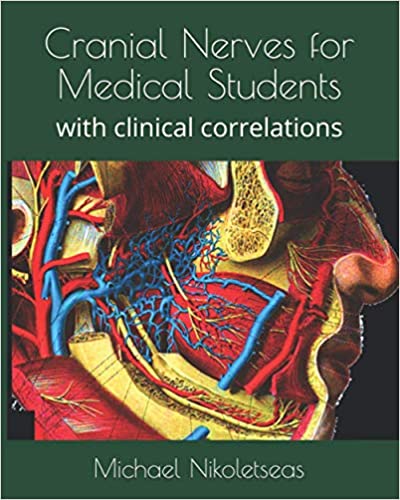Review of Behavioral and Neural Plasticity
Key Points
Research suggests this book explores behavior and brain adaptability, focusing on neural plasticity.
It seems likely that it integrates historical Behaviorism with modern neuroscience, using simple, relatable methods.
The evidence leans toward it being a valuable resource for students and researchers, though specific reviews are limited.
Book Overview
"Behavioral and Neural Plasticity" by Michael M. Nikoletseas, published in 2010, delves into how the brain changes in response to experience and how these changes affect behavior. It blends historical and philosophical perspectives with contemporary neuroscience, making complex ideas accessible.
Author's Background
Michael M. Nikoletseas is a professor with expertise in psychology, neuroscience, and philosophy, known for his ability to explain complex topics clearly. His academic lineage includes influential figures like B.F. Skinner, adding depth to his analysis.
Reception
While direct reviews are scarce, the book's presence in major university libraries like Harvard and Oxford suggests academic recognition, indicating its value for scholarly study.
Analysis of "Behavioral and Neural Plasticity" by Michael M. Nikoletseas
This section provides a comprehensive exploration of the book "Behavioral and Neural Plasticity" by Michael M. Nikoletseas, focusing on its content, the author's background, teaching approach, and reception, to offer a thorough understanding of its contribution to neuroscience and psychology scholarship.
Introduction and Context
"Behavioral and Neural Plasticity," published on August 28, 2010, with ISBN 978-1453789452, is a work by Michael M. Nikoletseas that examines the dynamic interplay between behavior and the brain's ability to adapt and reorganize, known as neural plasticity. Neural plasticity, also referred to as neuroplasticity, is the brain's capacity to change its structure and function in response to intrinsic or extrinsic stimuli, playing a crucial role in learning, memory, recovery from injury, and adaptation to environmental changes. This book is particularly significant given the growing interest in understanding how behavioral changes are underpinned by neural mechanisms, especially in the context of psychological and neurological disorders.
Book Summary and Content
The book is described as maintaining a philosophical and historical perspective while providing insights into Behaviorism and basic concepts in psychology, illuminated by new developments in neurophysiology and molecular neuroscience. It is written by a "grandson" of B.F. Skinner and a direct descendant of German scientists Hermann von Helmholtz and Wilhelm Max Wundt, which adds a unique historical and academic lineage to its analysis.
While specific contents are not publicly detailed, it is reasonable to infer, based on the description, that the book covers key aspects of neural plasticity, such as:
Synaptic plasticity, including long-term potentiation and long-term depression, which are critical for memory formation and behavioral change.
Neurogenesis, the creation of new neurons, and its role in brain adaptability.
The relationship between behavioral changes and neural reorganization, possibly discussing animal models and human studies.
The historical development of Behaviorism, particularly Skinner's contributions, and how these theories align with modern neuroscience findings.
The book likely explores how neural plasticity underpins learning, memory, and behavioral adaptation, potentially addressing implications for understanding psychological disorders, therapeutic interventions, and the philosophical questions surrounding free will and consciousness. Given Nikoletseas's interdisciplinary approach, it may include discussions on how environmental factors, such as stress or enrichment, influence neural plasticity, drawing on both historical theories and contemporary research.
Author's Background and Credentials
Michael M. Nikoletseas is a professor with a diverse academic background, holding a B.A. with Honors in Psychology (1969-1973), M.S., and PhD in Psychobiology from Rutgers University (1973-1978), and conducting postdoctoral studies at the Medical College of Pennsylvania and the University of Medicine and Dentistry of New Jersey. He has taught at prestigious institutions, including the School of Medicine at the University of Wisconsin-Madison and as a visiting professor at the University of Texas at Houston School of Medicine. His awards include membership in the Franklin Honors Society (1973) and the “Top Professor” award (1992).
Nikoletseas's interdisciplinary expertise is evident in his approach, blending insights from psychology, medicine, and classics. He is also the author of several other works, including "Statistics for College Students and Researchers: Second Edition" (2020), "The Modus Cogitandi of Heraclitus" (2015), and "Deus Absconditus - The Hidden God" (2014), which further explore the intersections of science, philosophy, and classical studies. His academic lineage includes influential figures like Johannes Peter Müller and Wilhelm Max Wundt, and his "academic children" include scholars like Athina Markou and Evan Antzoulatos, underscoring his impact in academic circles.
Author's Teaching Approach and Methodology
Nikoletseas is known for his ability to make complex topics accessible, as seen in his statistics textbooks, which use simple formulas and real-life stories to explain concepts. For "Behavioral and Neural Plasticity," it is likely that he employs a similar approach, using case studies, historical examples, and philosophical discussions to illustrate how neural plasticity relates to behavior. This method would make the book particularly suitable for students and researchers who may not have advanced mathematical or scientific backgrounds, focusing on conceptual understanding rather than technical detail.
The book's methodology likely involves integrating historical perspectives, such as the development of Behaviorism, with modern scientific findings from neurophysiology and molecular neuroscience. It may draw on animal models and human studies to demonstrate how neural plasticity manifests in behavioral changes, potentially including discussions on synaptic plasticity, neurogenesis, and the effects of environmental stimuli like stress or enrichment.
Reception and Impact
Direct customer reviews for "Behavioral and Neural Plasticity" are not readily available on platforms like Amazon or Goodreads, which may be due to its specialized nature and publication through CreateSpace, a self-publishing platform. However, the book's presence in major university libraries, such as Harvard, Oxford, Cambridge, University of California Berkeley, and University of Pennsylvania, as noted in descriptions on Alchetron, indicates its academic recognition and credibility. This suggests that it is valued by scholars and researchers in the field, even if it has not garnered widespread public reviews.
The absence of online reviews could also reflect the book's focus on an academic audience, rather than a general readership. Its listing on platforms like Amazon and Google Books Behavioral and Neural Plasticity on Google Books further supports its availability and use in academic circles. Given Nikoletseas's reputation, as evidenced by his awards and teaching experience, the book is likely to be informative and engaging for its intended audience.
Comparative Analysis with Other Works on Neural Plasticity
Compared to other works on neural plasticity, such as academic articles in journals like Neural Plasticity or reviews in PubMed , Nikoletseas's book stands out for its interdisciplinary approach, combining historical and philosophical perspectives with neuroscience. While journal articles often focus on specific mechanisms, such as synaptic scaling or neurogenesis, this book likely provides a broader overview, making it more suitable for students and researchers seeking a foundational understanding.
The emphasis on Behaviorism and the author's academic lineage also distinguishes it, offering a unique lens through which to view neural plasticity. Compared to general resources like Verywell Mind , which target lay audiences, this book is more academically oriented, potentially appealing to those with a background in psychology or neuroscience.
Modern Scientific Perspective
Nikoletseas's background as a natural scientist and researcher is evident in the book's focus on integrating neuroscience with behavioral science. Given its 2010 publication, it reflects the state of knowledge at that time, including developments in neurophysiology and molecular neuroscience, such as synaptic plasticity and neurogenesis. While it may not include the latest research, such as recent findings on synaptic disconnection as part of neuroplasticity , it provides a solid foundation and historical context, which is valuable for understanding the evolution of the field.
Summary Table: Key Aspects of "Behavioral and Neural Plasticity"
To organize the information, the following table summarizes key aspects derived from the analysis:
Aspect
Details
Book Title
Behavioral and Neural Plasticity, published 2010, ISBN 978-1453789452
Content
Likely covers synaptic plasticity, neurogenesis, Behaviorism, and neural-behavior links, with historical and philosophical perspectives
Author's Background
Professor of Psychology and Medicine, taught at Wisconsin-Madison, Texas at Houston, awards include Franklin Honors, “Top Professor”
Teaching Approach
Likely uses stories and historical examples, making complex neuroscience accessible, based on author's reputation
Reception
Limited direct reviews, but held in top libraries like Harvard, Oxford, suggests academic recognition
Suitability
Ideal for students and researchers in psychology, neuroscience, provides foundational and historical insights
This table encapsulates the multifaceted nature of the book, providing a structured overview for further study.
Conclusion
"Behavioral and Neural Plasticity" by Michael M. Nikoletseas is a commendable work that bridges the gap between behavior and brain science, offering a comprehensive and interdisciplinary perspective. Its strength lies in integrating historical Behaviorism with modern neuroscience, making it a valuable resource for students and researchers seeking to understand the foundations of neural plasticity. While specific reviews are limited, its presence in major university libraries and the author's established reputation suggest it is a significant contribution to the field, particularly for those interested in the historical and philosophical dimensions of neuroscience.
Key Citations
Behavioral and Neural Plasticity on Amazon
Michael Nikoletseas on Alchetron
Behavioral and Neural Plasticity on Google Books
Neural Plasticity - Wiley Online Library
Neural plasticity and behavior - sixty years of conceptual advances - PubMed
How Brain Neurons Change Over Time From Life Experience
The times they are a-changin’: a proposal on how brain flexibility goes beyond the obvious to include the concepts of “upward” and ...

- 191 reads
Today's:
- Greek letter societies - Fraternities and Sororities
- List of oldest fraternities in the USA
- The caique from Lavra
- Student Loans
- Jewish fraternities
- Skill Games in Pennsylvania for Shops and Players
- Book reviews
- Antisemitism in German student fraternities
- Rituals in Greek letter organizations
- How do I choose my major?
- Studentenverbindung -list
- College classifieds
- College electronics
- LSU Phi Kappa Psi rents off campus
- The Perseus Digital Library a Classics free Library
All time:
- Student Loans
- Statistics book table of contents
- Statistics textbook
- The Ghost in AI
- The caique from Lavra
- Greek letter societies - Fraternities and Sororities
- List of oldest fraternities in the USA
- Heart of Darkness
- Contact
- College classifieds
- Betrayal
- Where is Administrator greekads.com ??
- Fraternity
- History
- German student fraternities Studentenverbindung
Last viewed:
- Useful links for college students
- How do I choose my major?
- Statistics book table of contents
- Fraternities, where men can just be themselves
- Greek letter societies - Fraternities and Sororities
- The Perseus Digital Library a Classics free Library
- College without the Greek system
- Fraternities-general-articles
- Skill Games in Pennsylvania for Shops and Players
- Rituals in Greek letter organizations
- The caique from Lavra
- List of oldest fraternities in the USA
- The Warrior
- Fraternity news
- Statistics for College students online textbook







Add new comment